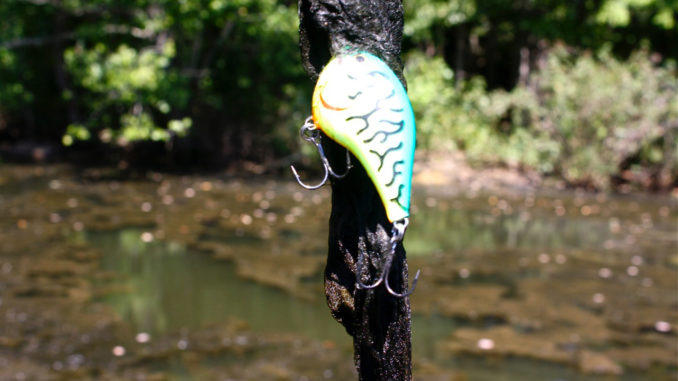
Black mat algae changes freshwater fisheries in negative fashion
A threatening black menace continues to encroach upon the fisheries at Tuckertown and Shearon Harris lakes. The moss-like growth cloaks shoreline cover, leaves floating deposits of itself, and stinks up the place.
Seven years ago, experts in aquatic life and weed management from N.C. State University visited Tuckertown to identify the mysterious moss called “snot grass” by fishermen and “algae” by fishery biologists.
The culprit was identified as black mat algae or lyngbya. It’s composed of stringy mats of filaments that can persist through all seasons and offers no positive attributes. It has been described as a water-degrading infestation that can ruin a fishery by releasing toxins, destroying spawning grounds and reducing fish habitat.
The indestructible algae can’t be destroyed by chemicals, fire or other means. It replenishes itself by making its own nutrients and by regulating its own environment.
The algae rests dormant in lakes for years until its growth is triggered by excessive nutrients from agricultural runoff; then it spreads like wildfire.
Today, the algae rules at Tuckertown. The canary reed grass that once enveloped Tuckertown has been displaced by the algae, except for small patches in Riles and Ellis creeks. The algae clogs trolling motors, preventing navigation. Once limited to the shallows, it now thrives in water as deep as 10 feet.
The algae has affected fishing at Tuckertown. Former bass hot spots have been choked out by its presence, and it has rendered many lures useless, exceptions being frogs, Senkos, floating worms and jigs.
The algae has made serious inroads at Shearon Harris Lake as well. Fishermen Richard Szczerbala of Apex said that. over the years, it has spread at Harris, forcing fishermen to avoid parts of the lake. It fouls up lures and affects bass behavior.
“Bass at Harris once roamed in large schools, but now they move in small schools and are harder to find,” said Szczerbala.”The floating mats of algae are also a navigational hazard.”
Small patches of lyngbya also linger at Badin Lake just waiting to be triggered.
A specialist in environmental hazards at Clemson University has discovered a means of containing the algae but not eliminating it, so once it gains a foothold in a lake, it’s there to stay.



